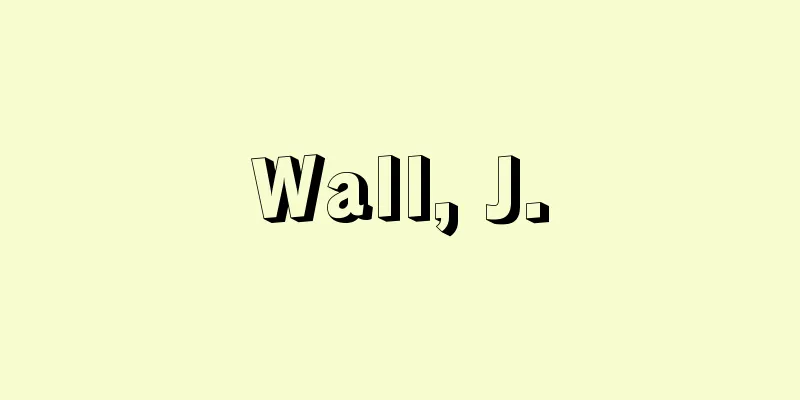Hearing aid - Hochouki (English spelling) Hearing aid

What it's likeA hearing aid is a device that amplifies sound and is used by people with hearing loss to hear sounds. It is merely a tool to compensate for hearing loss and does not normalize hearing itself. Why can you hear with a hearing aid? Voice, which is the medium of conversation, is made up of various sound waves, but they have a certain magnitude (the amount of energy) and frequency (the pitch of the sound). Roughly speaking, sounds range from 30 to 80 dB (measured in decibels, the same unit used for hearing levels; the higher the number, the louder the sound), and there are loud sounds (such as vowels) and quiet sounds (such as consonants). At a hearing level of 30 dB or above, it becomes difficult to hear normal conversation sounds, and the worse your hearing becomes, the more you will need a hearing aid. In this case, a hearing aid amplifies sounds that the hearing-impaired person cannot hear so that they can hear them. However, if there is almost no hearing remaining, no matter how much the hearing aid amplifies the sounds, they will not be able to hear them. Hearing aids require adjustmentsHearing aids can help people with hearing loss to hear, but it is not the case that the louder the sound, the better. Sounds that are too loud are not only uncomfortable for the ears, but can also damage the auditory nerve and cause hearing loss. For this reason, it is necessary to adjust the sound so that it is not too loud (maximum sound pressure adjustment). In addition, it is necessary to adjust the amplification (frequency response adjustment) according to the degree of hearing loss, ranging from low-frequency sounds (buzzing, vibrating sounds) to high-frequency sounds (metallic or ringing sounds). If you want to improve your hearing in particular, it is effective to amplify high frequencies. Precautions when using hearing aidsUnlike vision (glasses), hearing (hearing aids) requires subtle adjustments because the sounds we want to hear are not constant, and the environmental noise varies by location and time, and in extreme cases, can vary instantaneously. Recent digital hearing aids have improved considerably in terms of sound quality processing, etc., compared to traditional analogue hearing aids. However, unlike vision, hearing requires getting used to it, so they do not necessarily satisfy everyone. In hearing aid rehabilitation, you will need to adjust the hearing aid several times every 1-2 weeks to check whether any sounds were too loud or difficult to hear. After these adjustments, you will be able to use the hearing aid in your daily life with the best hearing. There are currently about 500 types of hearing aids. Recently, open-type hearing aids for people with mild hearing loss are on the rise. However, you can only try out a few types. If it is completely impractical, you will need to try out a different hearing aid, so don't forget to get a second opinion from a hospital or hearing aid retailer. If you have any concerns while using the product, don't forget to consult us immediately. Jun Kono "> Figure 22. Speech band and classification of hearing loss Source: Houken “Sixth Edition Family Medicine Encyclopedia” Information about the Sixth Edition Family Medicine Encyclopedia |
どんなものか補聴器とは、難聴の人が音声を聞き取るために使用するもので、音声を増幅する機器です。あくまでも聴覚障害を補うための道具にすぎず、聞き取りそのものを正常にするものではありません。 なぜ補聴器で聞き取れるのか 会話の媒介である音声は、さまざまな音波からなりますが、一定の大きさ(エネルギーの大小)と周波数(音の高低)をもっています。これを 大まかにいうと、大きさでは30~80㏈(デシベルという単位で、聴力レベルの単位と同じ。数が増えるほど大きい音)の範囲に分布しており、大きい音声(たとえば母音)もあれば小さい音声(子音など)もあります。聴力レベルが30㏈以上では、普通の会話音が多少なりとも聞き取りにくくなり、聴力が悪くなるほど、補聴器が必要となります。 この際、難聴者が聞き取れない音声を聞き取れるような大きさに増幅するのが補聴器です。しかし、ほとんど聴力が残っていない場合には、どんなに補聴器で音声を増幅しても聞き取ることはできません。 補聴器使用には調節が必要難聴の人でも補聴器で聞き取れるようになりますが、ただ音声を大きくすればするほどよいというわけではありません。大きすぎる音声は耳に不快感をもたらすのみならず、逆に聴覚神経を障害し、難聴の原因となります。このため、あまり大きい音声が入らないように調節する必要があります(最大音圧調節)。 また、周波数が低い音(ブーという振動する感じの音)から高い音(金属音やキンキンとする音)の間で、難聴の程度に合わせて増幅を調節する必要があります(周波数特性調節)。とくに聞き取りをよくしたい場合には、高い周波数を増幅することが有効になります。 補聴器使用の注意点視覚(眼鏡)と違って、聴覚(補聴器)は微妙な調節が必要です。その訳は、聞き取りたい音声が一定ではないこと、環境雑音が場所や時間によって、極端な場合には瞬時に異なるという点です。 最近のデジタル補聴器は、従来のアナログ式に比べ、音質処理などかなり性能はよくなってきました。しかし、視覚と違って、聴覚では慣れの問題があり、必ずしもすべてを満足させるものではありません。 補聴器のリハビリテーションでは、実際に使用し「大きすぎる音はなかったか」「聞き取りにくいことはなかったか」など、1~2週間ごとに数回、調節を繰り返す必要があります。そうした調節をへて、日常生活で最も聞き取りがよい状態で使用できるようになります。 補聴器は現在500種類ほどあります。最近は軽度難聴者用のオープン型が増えています。しかし、実際に試すことができるのは数種類にすぎません。まったく実用的でない場合には、補聴器を換えて試聴することが必要になるので、病院や補聴器販売店のセカンドオピニオン(第二の診断)も忘れないでください。 使用中に少しでも気になることがあれば、すぐ相談することも忘れないでください。 河野 淳 "> 図22 会話帯域と難聴の分類 出典 法研「六訂版 家庭医学大全科」六訂版 家庭医学大全科について 情報 |
>>: Ho Dynasty - Ho Dynasty (English spelling)
Recommend
Oshika Kabuki
Local Kabuki performed in Oshika Village, Shimoina...
Gigi (plant) - Gigi
...It has many local names, such as Nirogi in Koc...
Kapitan Geta - Kapitan Geta
〘Noun〙 (Perhaps modeled after the leather shoes wo...
Pieter Lastman
1583‐1633 Dutch painter. Born and died in Amsterda...
charbonniere (English spelling) charbonniere
…Hyotan-goke has been studied in detail from many...
Cayratia japonica (Thunb.) Gagn.
A perennial climbing weed of the Vitaceae family (...
Konoe family - Konoe
The main line of the Northern Fujiwara clan. Its ...
Boiled oil
Drying oil is heated and air is blown in, and a d...
Cyclamen atkinsii (English spelling) Cyclamen atkinsii
… [Munemin Yanagi]. … *Some of the terminology th...
Mandevilla - Mandevilla
Fujimoto (a climbing plant) of the Apocynaceae fa...
Oilseeds
Seeds with high oil content from which oil is extr...
Dutch windmill - Hollandagarafusha
…Windmills were introduced to Europe by Muslims a...
Chloropalladate - Chloropalladium salt (English name) chloropalladate
Compounds with oxidation numbers +II and +IV are k...
Upper Nada - Kaminada
The central settlement of Futami in the southwest ...
Baozi (bao-zi) - Baozi (English spelling)
A type of Chinese dim sum. It is a steamed bun mad...









